Table of content
- Pork Kidneys: The Star Ingredient
- Aromatics and Flavor Enhancers
- Sauces and Seasonings
- Oil and Heat
- Cleaning and Deodorizing
- Scoring and Slicing
- Preheating the Wok
- Searing the Aromatics
- Cooking the Kidneys
- Finishing the Sauce
- Sichuan-Style Spicy Kidneys
- Cantonese-Style Oyster Sauce Kidneys
- Vegetarian Adaptation
Stir-fried pork kidneys, known in Chinese cuisine as 炒腰花 (chǎo yāo huā), is a dish that marries bold flavors with delicate texture. Often celebrated for its rich, savory taste and tender yet slightly crisp mouthfeel, this dish requires precision in preparation and cooking. While it may seem intimidating to novice cooks, mastering the technique of stir-frying pork kidneys opens the door to a world of culinary creativity. This article will explore the history of the dish, the science behind its unique texture, and a step-by-step guide to achieving restaurant-quality results at home.
The Cultural Significance of 炒腰花
In Chinese culinary traditions, offal dishes like 炒腰花 hold a special place. Historically, these ingredients were prized for their affordability and nutritional value, offering a way to stretch meals during lean times. Today, they remain beloved for their distinct flavors and textures. Pork kidneys, in particular, are revered in regions like Sichuan and Hunan, where spicy, aromatic preparations dominate. The dish’s name, 腰花 (yāo huā), translates to “kidney flowers,” a poetic reference to the scored and sliced meat’s resemblance to blooming petals.
Understanding the Ingredients
Pork Kidneys: The Star Ingredient
Pork kidneys are the heart of this dish. When selecting kidneys, look for fresh, plump organs with a deep red hue and minimal discoloration. Avoid those with a strong ammonia smell, as this indicates spoilage. A single kidney typically weighs 150–200 grams and serves one person.
Aromatics and Flavor Enhancers
- Ginger and Garlic: These form the aromatic base of the marinade and stir-fry, neutralizing any gamey flavors.
- Scallions: Added at the end for a fresh, oniony kick.
- Chili Peppers: Optional but traditional in spicy preparations, providing heat and color.
Sauces and Seasonings
- Soy Sauce: Use light soy sauce for salinity and dark soy sauce for color.
- Shaoxing Wine: A rice wine that adds depth and deodorizes the kidneys.
- Oyster Sauce: Enhances umami and richness.
- Sugar: Balances the saltiness and adds complexity.
- Cornstarch: Creates a silky coating and thickens the sauce.
Oil and Heat
A high-smoke-point oil like peanut or vegetable oil is essential for stir-frying. The wok must be screaming hot to sear the kidneys quickly, preserving their tenderness.
Preparing the Pork Kidneys: A Step-by-Step Guide
Cleaning and Deodorizing
- Trimming: Remove the outer membrane and any visible fat.
- Halving: Slice the kidney lengthwise to expose the inner core.
- Removing Sinew: Use a sharp knife to carefully scrape away the white, fibrous sinew—this is crucial for eliminating unpleasant odors.
- Soaking: Marinate the kidneys in a mixture of milk or vinegar water (1:1 ratio) for 30 minutes. This step tenderizes the meat and neutralizes any remaining gamey flavors.
Scoring and Slicing
- Scoring: Make shallow, diagonal cuts across the kidney’s surface in a crosshatch pattern. This increases surface area for marinade absorption and ensures even cooking.
- Slicing: Cut the kidney into bite-sized pieces, roughly 3–4 cm in length.
Marinating for Maximum Flavor
Marinating is not just about seasoning—it’s a chemical process that transforms the kidneys’ texture. Combine the following in a bowl:
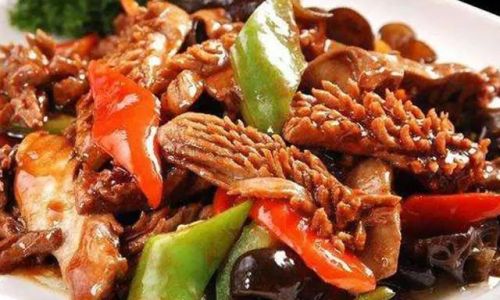
- 1 tbsp light soy sauce
- 1 tsp dark soy sauce
- 1 tbsp Shaoxing wine
- 1 tsp oyster sauce
- 1 tsp sugar
- 1 tsp cornstarch
- 1 tbsp water
Add the kidneys and toss gently. Let them marinate for 15–20 minutes while you prepare the aromatics.
The Stir-Frying Process: Technique Matters
Preheating the Wok
Heat your wok over high heat until drops of water evaporate instantly. Add 2–3 tbsp of oil and swirl to coat the surface.
Searing the Aromatics
Add minced garlic, ginger, and dried chili peppers (if using). Stir-fry for 10–15 seconds until fragrant but not browned.
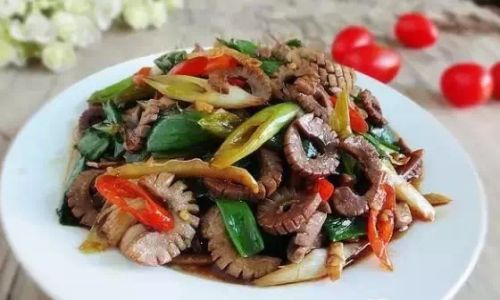
Cooking the Kidneys
- Quick Sear: Add the marinated kidneys, spreading them in a single layer. Let them sear undisturbed for 30 seconds to develop a golden crust.
- Tossing: Stir-fry vigorously for 1–2 minutes. The kidneys will change from pink to grayish-brown.
- Avoid Overcooking: Overcooked kidneys become tough and rubbery. Remove them from the wok when they’re just cooked through.
Finishing the Sauce
- Deglaze: Pour in a splash of Shaoxing wine or chicken broth, scraping up any browned bits.
- Thicken: Stir in a slurry of 1 tsp cornstarch and 2 tbsp water. Let the sauce bubble for 30 seconds.
- Final Touches: Toss in sliced scallions and a drizzle of sesame oil. Adjust seasoning with salt or sugar if needed.
Troubleshooting Common Issues
- Chewy Texture: Overcooking is the primary culprit. Remove the kidneys from the heat as soon as they lose their pink hue.
- Gamey Flavor: Insufficient cleaning or marinating. Ensure the sinew is removed and the marinade includes acidic ingredients like vinegar.
- Soggy Sauce: Overcrowding the wok or using too much cornstarch. Cook in batches if necessary, and use the slurry sparingly.
Regional Variations and Creative Twists
Sichuan-Style Spicy Kidneys
Add doubanjiang (fermented broad bean paste) and Sichuan peppercorns to the aromatics. Garnish with chopped cilantro.
Cantonese-Style Oyster Sauce Kidneys
Omit chili peppers and increase oyster sauce. Serve with steamed rice and blanched bok choy.
Vegetarian Adaptation
Substitute the kidneys with oyster mushrooms or king trumpet mushrooms. Follow the same scoring and marinating technique for a meat-like texture.
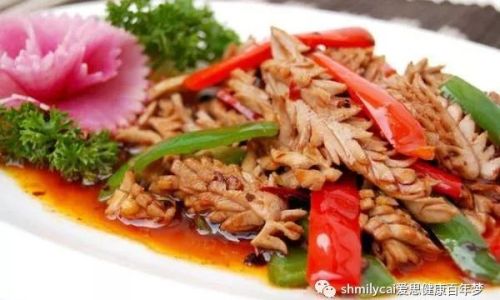
Pairing Suggestions
- Rice: The sauce’s richness pairs beautifully with jasmine rice.
- Vegetables: Serve alongside stir-fried asparagus, snow peas, or bell peppers for balance.
- Beverages: A crisp lager or a light-bodied red wine like Pinot Noir complements the dish’s umami notes.
Nutritional Considerations
Pork kidneys are a good source of protein, iron, and vitamin B12. However, they are also high in cholesterol, so moderation is key. Pairing them with fiber-rich vegetables and whole grains can create a balanced meal.
Conclusion: The Journey to Mastery
Perfecting 炒腰花 is a testament to the alchemy of Chinese cooking—a blend of precision, patience, and respect for ingredients. While the process may seem meticulous, each step serves a purpose: cleaning ensures purity, marinating imparts flavor, and high-heat cooking seals in juiciness. With practice, you’ll learn to gauge the kidneys’ doneness by sight and sound, transforming a humble ingredient into a culinary masterpiece.
Whether you’re a home cook seeking to impress dinner guests or a curious foodie expanding your repertoire, this dish offers endless opportunities for experimentation. Adjust the spice level, experiment with sauces, or incorporate local produce. The key lies in understanding the balance between fire and finesse—a philosophy that defines Chinese stir-frying at its finest.
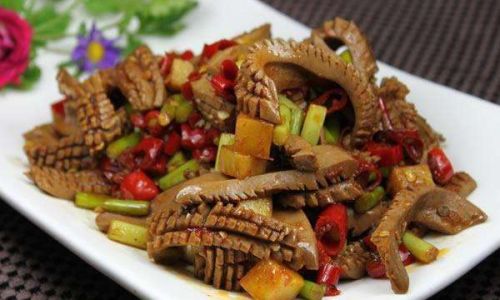
So, sharpen your knife, fire up the wok, and embark on a journey to master 炒腰花. Your taste buds—and your dinner guests—will thank you.

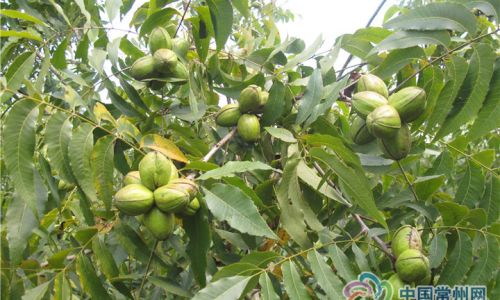

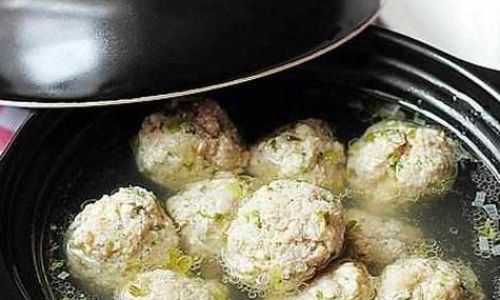


0 comments